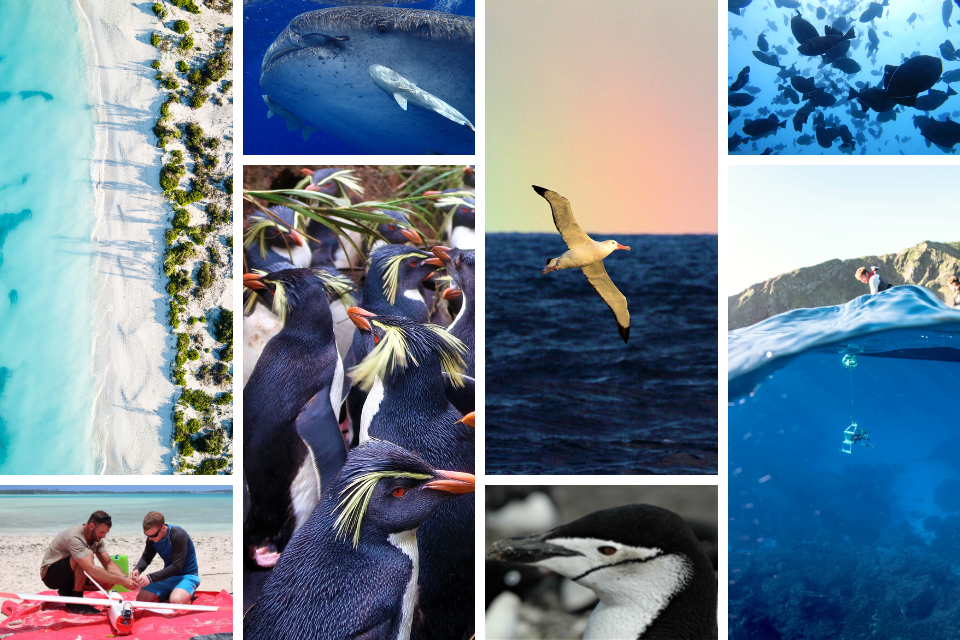 Celebrate World Ocean Day with the Blue Belt Programme
The Blue Belt Programme continues to assist British Overseas Territories in their work to protect their diverse marine ecosystems across the globe.
After an exciting year, in which the Programme has expanded into new geographies and created new sub-programmes, the programme is marking World Ocean Day 2022 in several ways.
Today the programme welcomes UK Overseas Territories (UKOTs) and Blue Belt Programme partners to London, to showcase their recent work and future ambition.
The Blue Belt welcomes the Turks & Caicos Islands (TCI) to the Programme today. These tropical islands become the first UKOT located within the Caribbean to join the full Blue Belt Programme.
In St Helena the new state of the art Blue Belt Programme funded Marine Centre will officially open at a public event in Jamestown today.
The Blue Belt Programme Annual Update 2021/22 is published today, highlighting key work from across the UKOTs and the Programme over the last 12 months.
Focus on UK seaweed aquaculture

In recent years there has been a resurgence of interest in seaweed. This has been driven by its many uses, high nutritional value, and ability to provide ecosystem services, such as habitat provision, carbon and nutrient uptake and coastal protection.
In the UK seaweeds have been used for centuries, and around 600 species can be found along our shores. However, the size of the seaweed industry and the scale of production has fluctuated in the UK over the centuries.
Recently Cefas carried out a review into the status of the seaweed industry in the UK. The review found that seaweeds were still harvested from the wild in various parts of the UK, but there were an increasing number of commercial seaweed farms. Between 2016 and the current day there has been a 10 fold increase in commercial seaweed farms, suggesting a shift towards farmed aquaculture sources of seaweed. Seaweed related businesses in the UK have more than doubled since 2016 with at least 74 businesses, mainly located in England and Scotland, now relying on seaweed harvested from the wild.
|
Bid to protect “Blue Food Revolution”

Aquaculture already provides about half of all seafood consumed by humans, and by 2050 it is expected to provide as much as 70%. In 2020 seafood consumption reached an all-time high, and sustainable aquaculture is playing a vital role in this "blue food" revolution.
In their new paper in Nature Food, scientists from Cefas and the University of Exeter developed a Seafood Risk Tool to identify and reduce the impact of chemicals and diseases in global aquaculture.
"Much of the discourse relating to sustainability of aquaculture has focussed on the potential impact of the sector on the natural systems in which it operates," said co-lead author Professor Grant Stentiford, from Cefas.
"Controlling the impact that diverse chemical and pathogen hazards may have on safe and sustainable production from the sector may thus lead us to closer alignment of policies for protection of aquatic environments and, those focussed on future food production from these natural systems.”
|
Trade in live coral: tools to improve tracking of the most traded marine animals

Corals are marine invertebrate animals made up of hundreds to thousands of tiny organisms joined together by limestone skeletons. They are the building blocks of coral reef ecosystems, providing essential food and shelter to other species such as fish, crustaceans, turtles, and people. However, corals are also the most traded CITES-listed (Convention on the International Trade in Endangered Species of Wild Fauna and Flora) marine animals globally.
Cefas is working with Indonesia, the world’s largest exporter of CITES-listed coral, who are leading the way to find more sustainable alternatives to harvesting wild corals. Farming corals is the primary alternative, and over the past two decades Indonesia have increased the proportion of farmed corals exports significantly. However, it is not always easy to tell the difference between a wild collected and a farmed coral.
In response to this coral identification challenge, scientists from Cefas are working with the Indonesian Coral Reef Foundation (TERANGI) and the Indonesian Nature Foundation (Yayasan Alam Indonesia Lestari - LINI) on a Defra funded project. The aim of the project is to build a shared understanding of the coral trade between Indonesia and the UK and develop a practical identification guide for traded corals. This will help regulators quickly identify if a species is what it says it is on the box, and spot mis-declared farmed coral.
|
 Discards are damaging- invasive species week
The annual Invasive Species Week took place in May, led by the GB Non-Native Species Secretariat (NNSS) . Non-native species (NNS) are animals and plants that have been moved by humans, accidently or deliberately, to places they can’t reach without this help. Once there, many species can survive, and some will thrive and could start to have a negative impact on the local biodiversity.
Cefas carries out a variety of work into marine and freshwater non-native species, to assess risks, support enforcement of relevant legislation and adherence to guidance, raise awareness of threats, and contribute scientific expertise and understanding to inform monitoring and management.
Cefas developed a user-friendly, multi-language screening tool to help understand the threats posed by non-native species. The decision support tool can help people understand the nature of the threat and how to reduce it. With the current trend for changing conditions due to climate change, now is the time to reassess which non-native species could become established in the coming years.
|